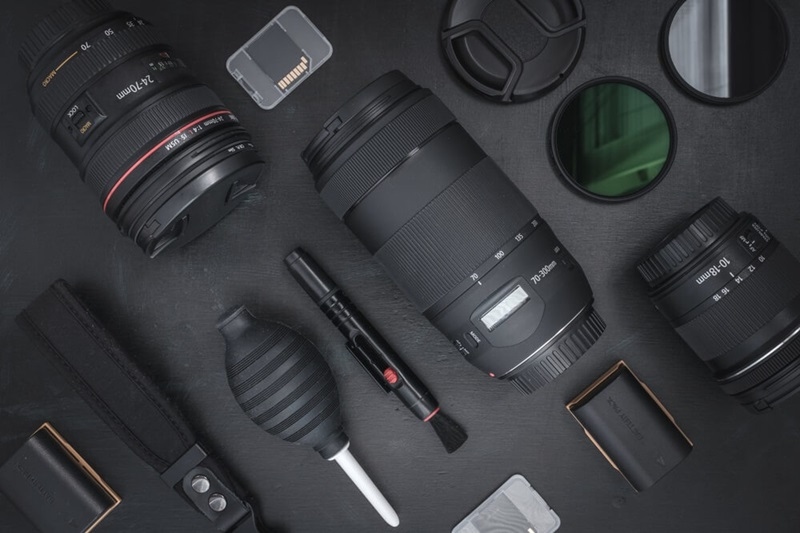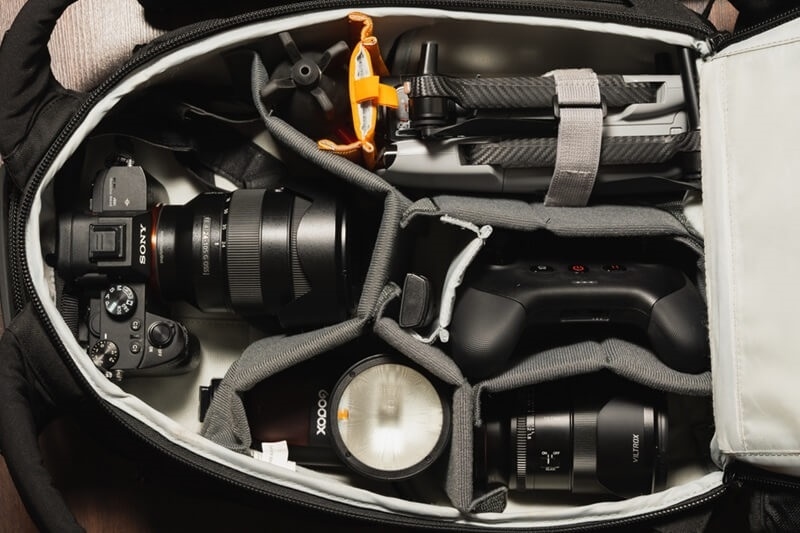
Understanding the correct way to store camera gear is arguably the most underappreciated aspect of photography. Many photographers, after spending thousands of dollars on high-quality gear, do not even store it properly. If not stored properly, all cameras, lenses, and accessories are vulnerable to dust, scratches, or, in the worst-case scenario, moisture damage, regardless of how well-built the systems are! Fortunately, once you have proper storage methodologies in place, you can safely store that gear, keep it functional, and stay prepared to use the gear at a moment’s notice through the recommended best practices for storing cameras and long-term storage of gear.
Whether you're a casual first-time photographer or a professional, organizing your camera gear properly is more than a neat obsession—it is about protecting your investment. Proper camera gear storage minimizes rust, helps keep everything in tip-top working condition, and increases the life cycle of your lenses, cameras, and accessories. Additionally, by utilizing the proper storage tips for camera safety, you can enhance your workflow, knowing that everything is organized in a neat and easily accessible manner.

When it comes to the best storage tips for cameras, consistency is key. Your daily habits will determine whether your gear remains reliable in the long run.
One of the easiest but best practices is keeping your photography gear organized in your bag. Place cameras, lenses, and accessories in padded dividers so that nothing comes into contact with one another. This minimizes the risk of breakage and scratches.
Automobiles tend to get subjected to a lot of heat and moisture, both of which can harm sensitive parts. Always keep your photography equipment indoors, even if you plan on being gone for a brief period of time.
Always cover front and back caps on your lenses when not in use. This helps protect your lenses from dust and moisture entering, particularly if you're storing lenses for extended periods.
One easy but effective tip for avoiding moisture in camera bags is the use of silica gel packets. These soak up moisture and minimize condensation, particularly if you are in a humid environment.
Moisture poses one of the largest risks to cameras and lenses. If left untreated, it can result in fungus within the lenses or corrosion of the electrical contact. Avoiding this calls for preemptive action.
For professionals, one of the best long-term solutions for storing gear is investing in an electronic dry cabinet. These cabinets are a controlled environment, minimizing the chance of mold and corrosion.
If you do not have a dry cabinet, ensure your storage space is sheltered from extreme temperatures at least. Basements and attics are bad options since they are subject to high humidity.
As stated above, silica gel is great for keeping moisture out of camera bags. Another alternative is activated charcoal bags that absorb humidity and odors. Replace them every several months for ultimate performance.
If you don't use your equipment daily, then you'll have to look into long-term equipment storage solutions. This keeps your equipment in working order even when in idle for months.
Dry boxes have humidity rates ranging from 40–50%, and this is perfect for cameras and lenses. Experts trust them because they provide uniform conditions throughout the year.
Never keep your equipment in sealed plastic bags for extended periods. When air is trapped, condensation may form, causing mold and rust.
Cameras and lenses must be inspected even when in storage. Power them on, test shutter mechanisms, and wipe off any dust to help ensure that the equipment is operational when you really need it.
In addition to protecting your equipment, having a good understanding of how to stage photography equipment will make you more efficient. Instead of taking time looking for accessories, they will always be right where you need them.
Small items can disappear on you, including batteries, memory cards, and filters. Put these small items in clear bins labeled so you can simply grab what you need when necessary.
If you have more than one camera and a few lenses, create an assigned shelf or drawer system. Padded dividers help keep things apart and prevent accidental damage.
For the traveling photographer, packing cubes and modular insert cameras keep everything in place within luggage. This avoids jostling during flights or road trips.
Your equipment is no safer than the practices you adopt. Maintaining regular camera safety practices minimizes the chances of accidents in storage as well as in the field.
While photographing outside, always wear a camera strap to avoid dropping the camera. Even pros have mishaps, and a strap provides an added level of security.
After a day of shooting in the rain or by the sea, dry equipment first before putting it away. Moisture seeps into hidden crevices and leads to long-term damage.
When storing gear in the long term, take batteries out to avoid leakage. Store them in a dry, cool container and out of direct sunlight.
Good storage habits aren't just safe for your gear; they also make shooting more fun. By merging organization with safety, you can have a smooth workflow.
Most photographers unknowingly ruin their equipment by committing small yet expensive errors. Steer clear of the following:
Not every photographer is going to spend money on fancy cabinets; fortunately, adequate storage still exists within a budget. Instead:
These cost-saving strategies still approximate camera safety tips and won’t leave you in the poorhouse.
Knowing how to store camera gear is an important skill that ensures your investment is protected and your gear is always ready for your next shoot. From using the most effective storage tips for cameras, maintaining moisture-free conditions in camera bags, and leveraging long-term storage solutions for gear, storing camera gear properly for the long term will keep your gear functioning properly for years. Additionally, to help perpetuate all camera storage gear, if you stay up-to-date on the best organization of photography equipment and safety tips for cameras whenever you pack your equipment for use,
You’ll not only protect your gear but also enhance your photography experience.
Your camera is not a tool but your artistic companion. Handle it gently, and it will keep on recording memories, pieces of art, and narratives for a long time.
This content was created by AI